About the British Ecological Society
Established in 1913, the British Ecological Society (BES) is the oldest ecological society in the world. The founding aim of the society was "to promote and foster the study of Ecology in its widest sense", and this remains its central tenant to this day.
About the competition
Every year the society holds its 'Capturing Ecology: Photographic Competition', with the aim of celebrating and promoting the work of its membership and the discipline of ecology.
The prize for the overall winner is £750 and two film cameras, whilst the overall runner up wins £250 and the student winner £100.
A well as these prizes, there are winners and student winners for each of the six categories (Up Close and Personal, Dynamic Ecosystems, Individuals and Populations, People and Nature, Ecology in Action, and The Art of Ecology).
The winning images are displayed at the society's immersive virtual exhibition here.
"This year's photos are of a very high standard and are a pleasure to look through," says Professor Jane Memmott, President of the British Ecological Society.
"Overall, the photographs capture a broad swath of biodiversity - from tiny mosses to giant bears. The winner is a beautifully composed photograph of a gull's eye - it's visually arresting, pin sharp and very beautiful, hitchhiking lice included!"
To view the images as a slideshow, click on the arrows in the top right-hand corner of the photos below.
Overall winners and runners-up

The overall winner of the competition was this somewhat disconcerting image of a Kumlien's gull, taken by Rebecca Nason - an ecologist and photographer living in Britain’s most northerly harbour town of Lerwick, Shetland. She said of the image "In April 2021, I came across a scarce Kumlien's gull as I fed bread to a growing number of herring gull sheltering from a Spring storm"
“When the Kumlien's gull approached to a good distance to allow for closer full-frame shots. I started photographing the eye detail, noting a gorgeous granite coloured iris with dark speckled plumage detail around the eye. It was only when I got home I realised that the speckled patterns were in fact lice clustered around the eye, the Kumlien's gull hadn't travelled alone!"
By Rebecca Nason.
Location: Lerwick Harbour, Shetland, UK. Camera settings: Olympus E-M1X with M.Zuiko 300mm pro lens & 1.4x converter. 500/sec, f7.1, ISO500, manual.
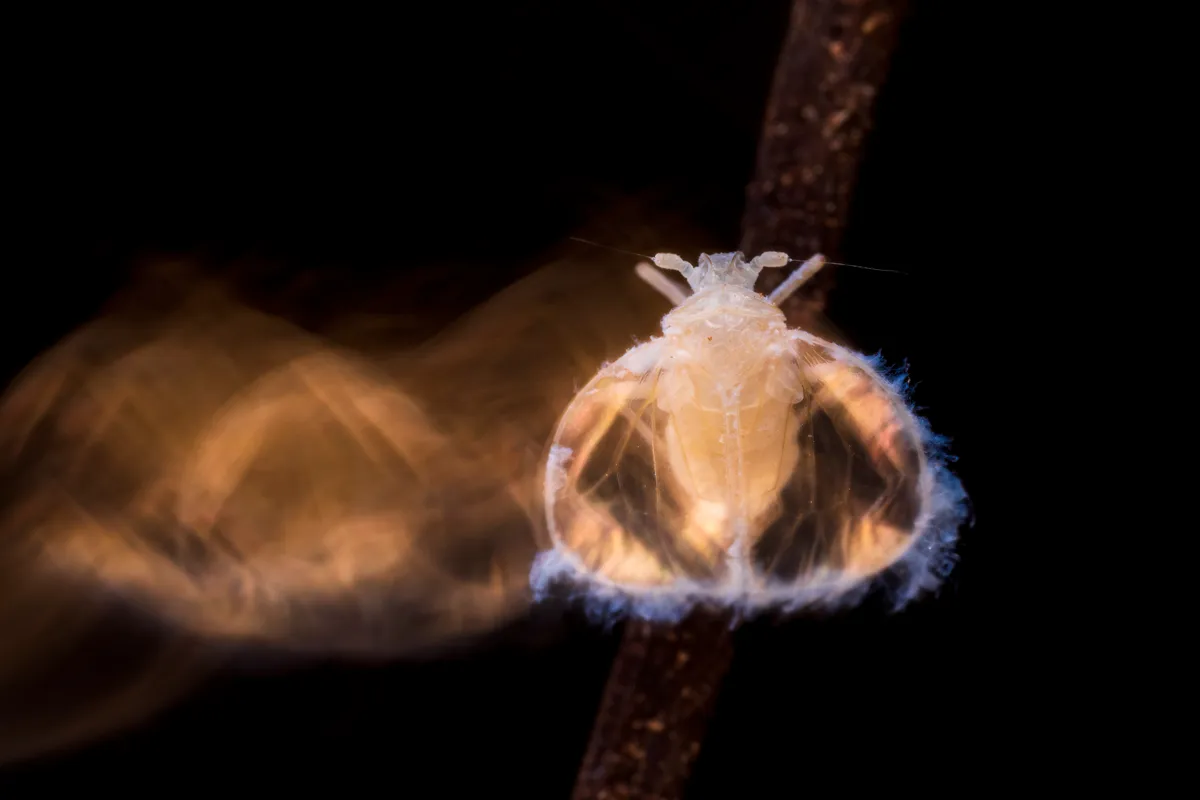
One of the few images of Valenciolenda fadaforesta ("fairy of the Valencian forests"), a cave-dwelling bug recently discovered in a few Spanish caves.
By Roberto Garcia Roa at the University of Valencia, Spain.
Location: Valencia, Spain. Camera settings: Canon 5DMark IV, Canon mp65, 3.2sg f16 ISO400.

A green lynx spider (Peucetia viridans) rests on a budding Liatris with its bumblebee catch. Seen in a bog in the Apalachicola National Forest in North Florida, USA. These spiders are masters of disguise.
By Dani Davis, a student at Florida State University.
Location: Crystal Bog, near Hosford, Florida, USA. Camera settings: Canon EOS 7D, Tamron 90mm Macro Lens, ISO 250, f/6.3, 1/250sec.
Up Close and Personal Category
An image displaying the intricacy of nature using close-up or macro photography.
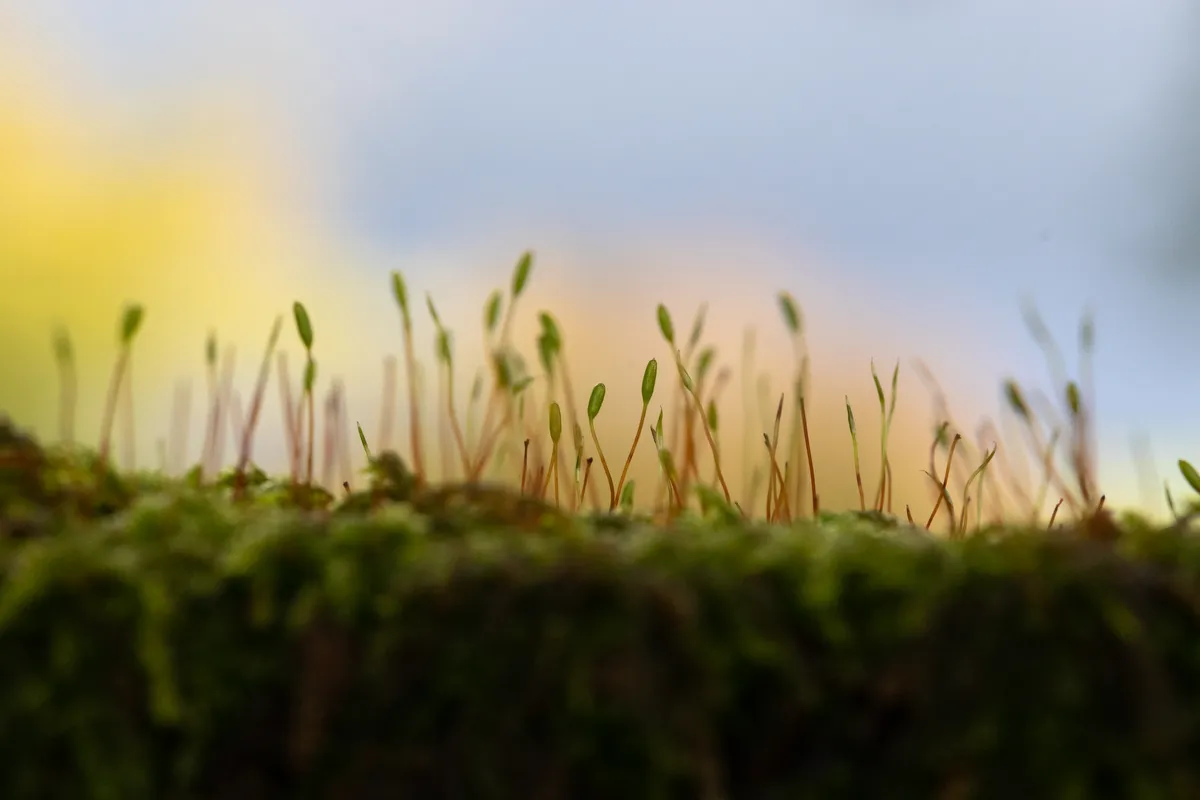
With the colours of the sunset in the background, the whole scene of this moss growing on a wall in Cornwall looks like something from a tropical rainforest.
By Alicia Hayden, from the University of the West of England.
Location: Cornwall, UK. Camera settings: Canon EOS 77D, Sigma 105mm lens, ISO-500, f/13.
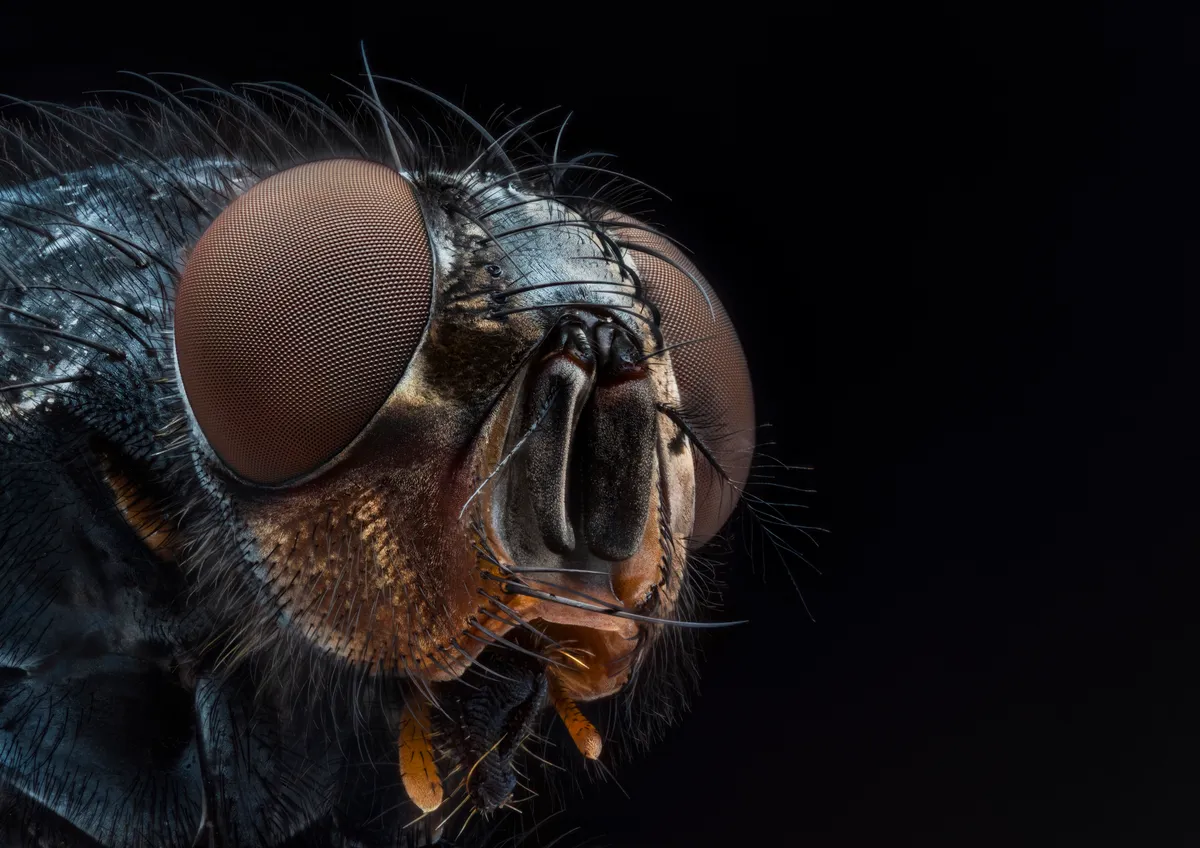
A high magnification portrait of a blowfly. The photographer wanted to reveal the intricacy and beauty of what many consider a pest.
By Jack Marcus Smith at the University of Cambridge.
Location: Cambridge, UK. Camera settings: 1/200 second, f/16, ISO 100, Nikon D750, LAOWA 25mm F2.8, Flash.
Ecosystems Category
Demonstrating interactions between different species within an ecosystem.
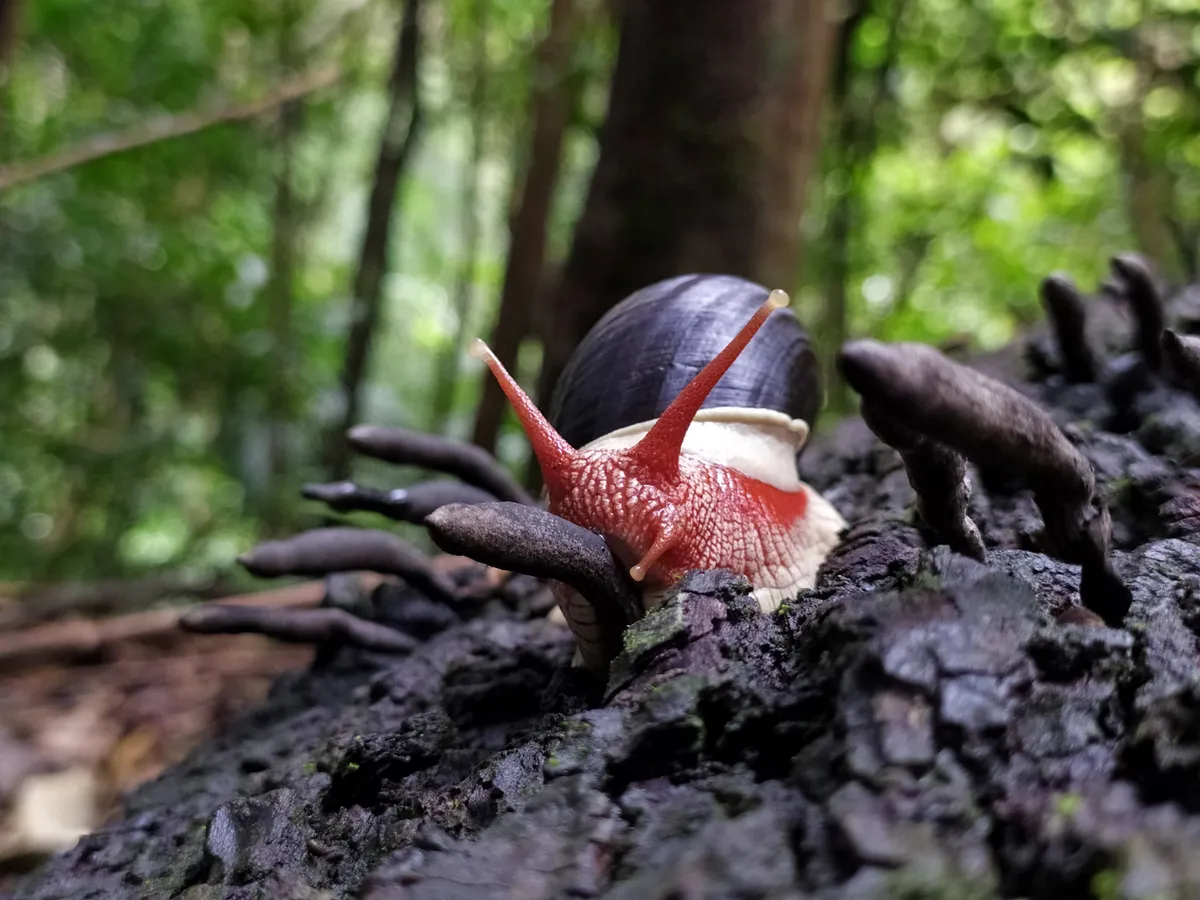
Indrella ampulla, an endemic species of snail is an important soil invertebrate that breaks down organic matter in the rainforest floors of the Western Ghats mountain range in India. Here, its feeding on Xylaria sp. fungi, commonly known as dead man's fingers.
By Vijay Karthick, from the Nature Conservation Foundation, India.
Location: Western Ghats, India. Camera settings: Mobile camera: Redmi Note8, Shutter Speed: 1/100 sec, ISO: 160.
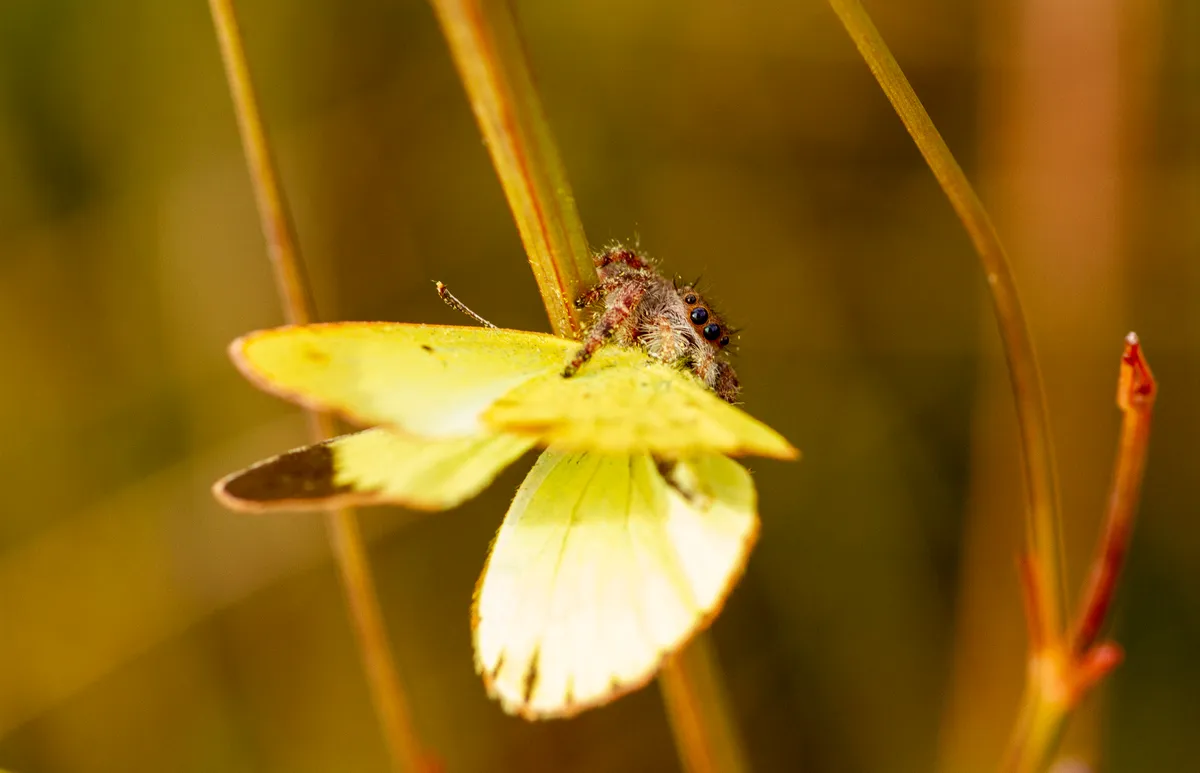
A tiny Phidippus regius (regal jumping spider) sits perched with a freshly caught Sulphur butterfly. Observed while visiting a bog near Sumatra, Florida.
By Dani Davis, from Florida State University.
Location: Near Sumatra, Florida. Camera settings: Canon EOS 7D, Tamron 90mm Macro Lens, ISO 900, f/7.1, 1/200sec.
Individuals and Populations Category
A unique look at a species in its environment, either alone or as part of a population.
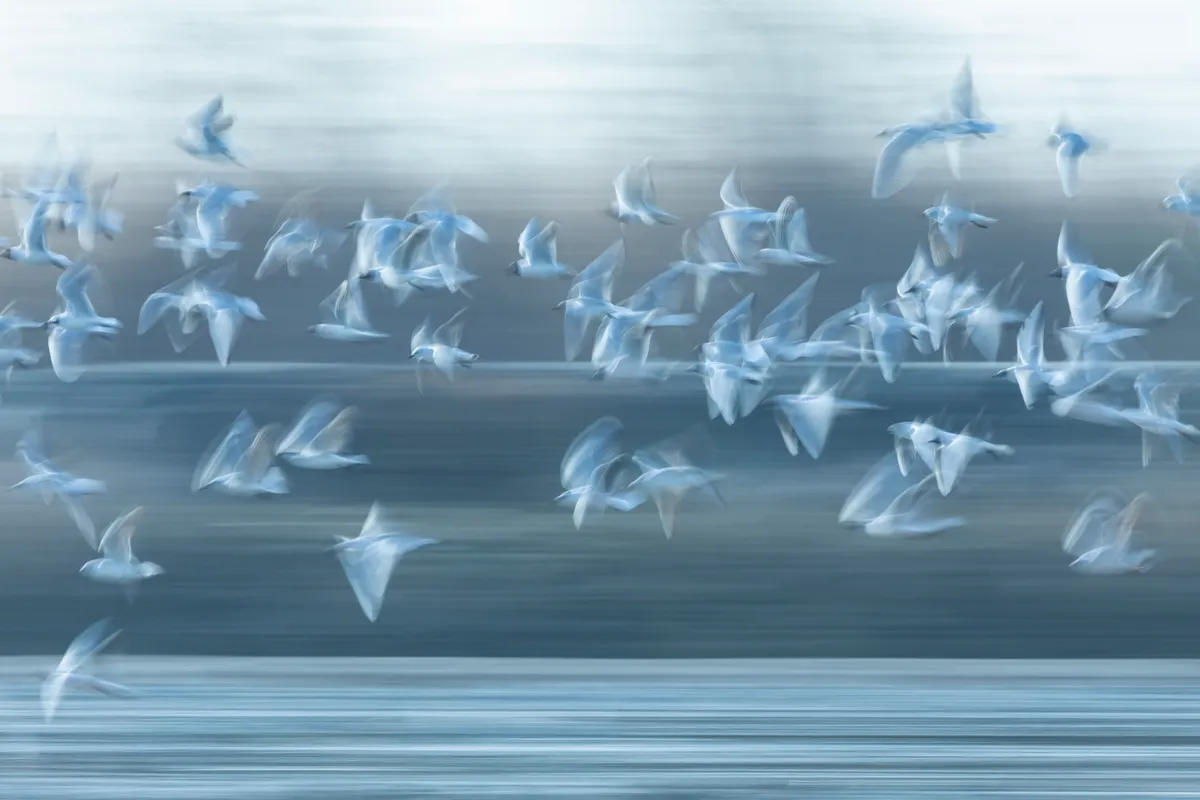
A large flock of gulls perform short but very quick flights to move around a field of rice during the first hours of the morning.
By Roberto Garcia Roa from the University of Valencia.
Location: Valencia, Spain. Camera settings: Canon 5 D Mark IV, Canon 100 -400 mm f/4.5-5.6 IS USM 1/10s f14 ISO250.

A granular poison dart frog guarding his territory. This frog may be small, but it is highly territorial. Males will ferociously defend their territories from rivals. This individual male was photographed in the late evening, perched upon a leaf, a position of high ground to overlook his territory.
By Jack Marcus Smith from the University of Cambridge.
Location: Osa Peninsula, Costa Rica. Camera settings: 1/30, f/2.3, ISO 100, Olympus Tough TG-5 Compact Camera, Ring Flash.
People and Nature Category
An interesting and original take on the relationships between people and nature.

Dormant ivy vines reach across a roadside wall blackened at the bottom by car exhaust. The photograph was taken on a small, neighbourhood street in Florence, Italy in the early spring of 2021
By Molly Dunn from the Florence Institute of Design International.
Location: Firenze, Italy. Camera settings: Canon EOS 5D Mark IV, 41mm, ISO 320, 1/400 sec, f/3,2.
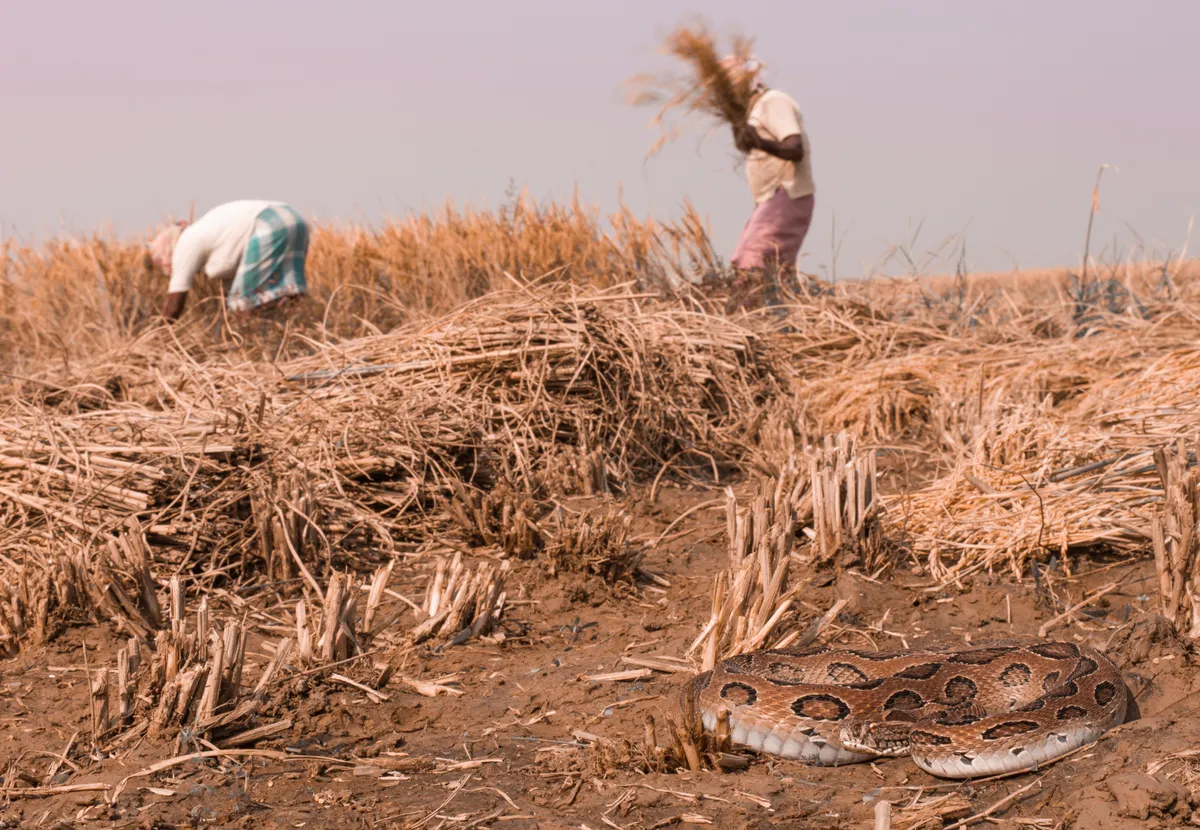
The Russell’s viper (Daboia russelii) often resides within rice paddies. Accidentally stepped upon by agricultural workers, this viper is frequently involved in human-snake conflict, resulting in death and life-changing injuries for millions of Indian people, annually.
By John Benjamin Owens, from Bangor University and Captive & Field Herpetology Ltd.
Location: West Bengal, India. Camera settings: Nikon D3200, 1/125, F13, 35mm prime and off camera DIY diffused flash
Ecology in Action Category
Showcasing the practice of ecology in action
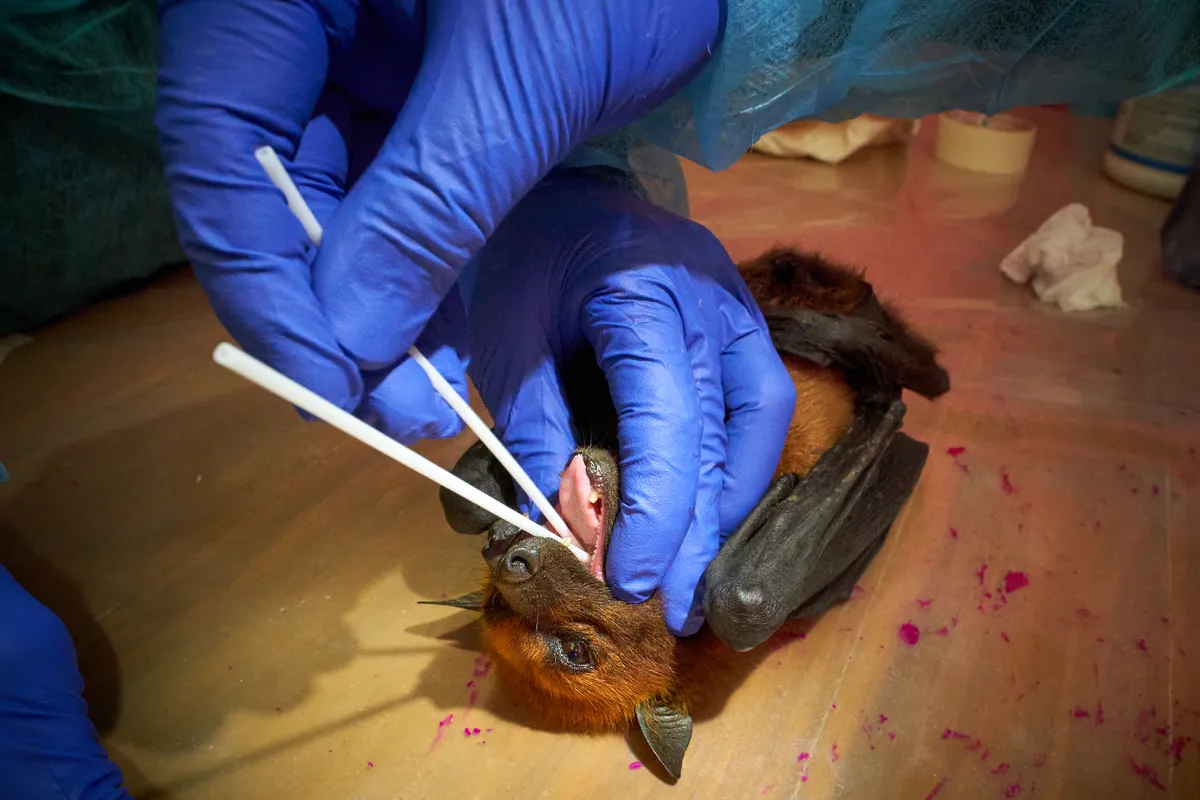
Taken at the start of the COVID pandemic, this image shows a team in Bangladesh sampling fruit bats near locations where the Nipah virus had infected humans and recording viruses and new viral sequences.
By Pete Hudson from Penn State University.
Location: Bangladesh. Camera settings: ISO 6400, f8, 1/250th, SonyA9, 24-105, Flash.
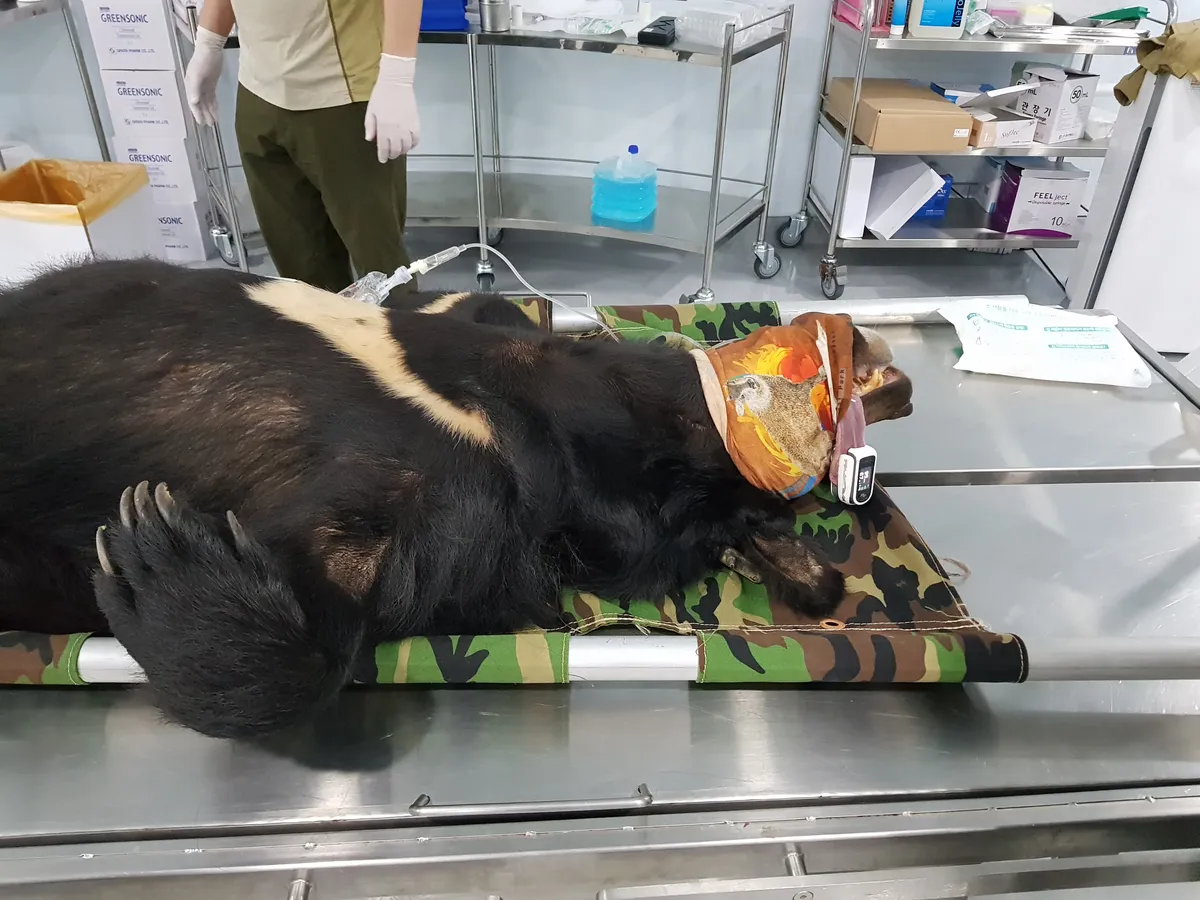
Conservation translocations – such as species reintroductions, or reinforcements – are increasingly important tools in conservation ecology. In South Korea, vets from the Korea National Park Service prepare to transport a female Asiatic black bear (Ursus thibetanus) in Jirisan National Park.
By Joshua Powell from the Zoological Society of London and UCL & Seoul National University.
Location: Jirisan National Park, South Korea. Camera settings: Canon 70D, Sigma 55-200.
The Art of Ecology Category
A creative and original take on photography denoting ecology

In tropical rainforests, plants are often colonized by an astonishing diversity of organisms that grows on the surface of their leaves, such as epiphyllous mosses, lichens, and fungi. The photo shows the colourful mosaic of biodiversity on the leaves of an Amazonian palm tree in a forest near Manaus, Brazil.
By Raul Costa-Pereira from the University of Campinas.
Location: Manaus, Brazil. Camera settings: NIKON D3200 55 mm f/5.6 1/30.
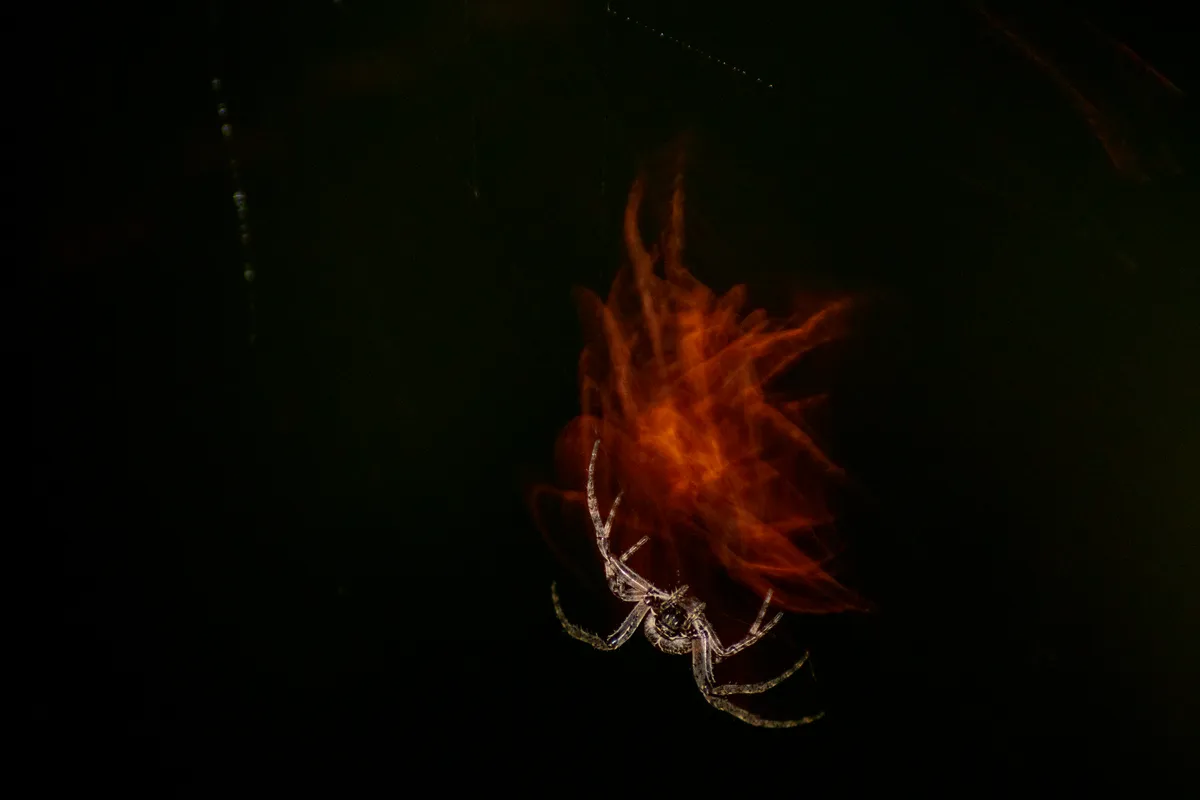
This spider was spending a lot of time repairing its web, and the streetlamp highlighted the movement of its legs. This illustrates the urban wildlife which is not usually acknowledged, showing the great diversity of wildlife in our urban spaces.
By Alicia Hayden, from the University of the West of England.
Location: Exeter, UK. Camera settings: Canon EOS 77D, Tamron 300mm lens, ISO-1600, f/5.6.